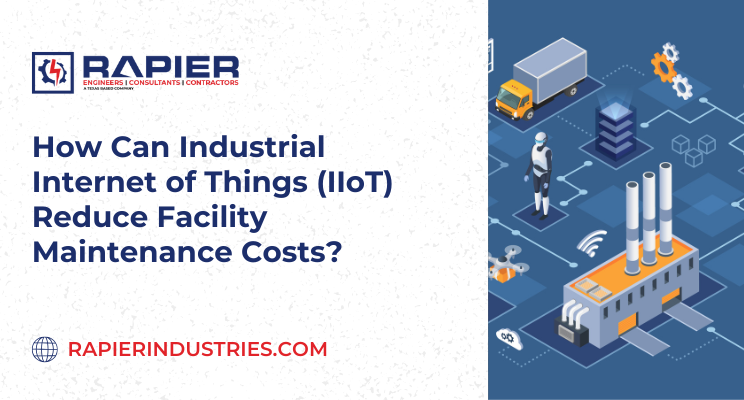We live in an age where businesses all over the world are investing significant time and resources to create a more connected workplace. Achieving a higher degree of connectivity in the industrial sector is especially advantageous because of the complexity that surrounds different industrial processes, such as manufacturing, logistics, renewable energy, and more. To accomplish this, companies are often working with industrial consultants to give their employees enhanced visibility into their daily operations, and the Internet of Things has emerged as the best overarching solution to achieve this goal.
What Is the Internet of Things?
The Internet of Things (IoT) refers to a network of interconnected digital and physical devices that collect and process data from a machine. This data consists of information about how different parts of the machine are operating, and users can access a virtual dashboard at any time to view this data and make adjustments to the machine’s processes.
One common example of a product that utilizes the Internet of Things is a smart electrical breaker; these devices allow facility managers to receive instant notifications about when a circuit breaker is tripped. This type of technology has practical applications in the commercial and industrial sectors as well, and it is known as the Industrial IoT.
What Is the Industrial Internet of Things (IIoT)?
The same basic principles of the standard Internet of Things apply here but are geared towards giving industrial employees more visibility into the performance of their facility’s equipment and machinery. The Industrial Internet of Things uses sensors, actuators, software, and other technologies to monitor and control industrial processes, provide real-time information on how efficient certain processes are, and monitor potential problems.
An industrial facility connected with low voltage applications like IIoT has many benefits, such as greater control over different processes and increased visibility. Industrial facilities that implement IIoT can experience reduced probability of equipment failure, which in turn can enhance the overall efficiency of a facility. Let’s learn more about how the Industrial Internet of Things can help reduce facility maintenance costs.
Helps Employees Improve Operational Efficiency
Since IIoT can constantly monitor and store data on your facility’s operations, it gives managers the opportunity to find areas for improvement. A network of sensors can determine the efficiency of every aspect of your industrial processes, and if any anomalies are detected, your team would be the first to know. The Industrial Internet of Things can help you discover what your facility is doing well and what it can improve on, allowing managers to make more informed decisions on facility improvements.
These network of sensors and cameras can also help managers and maintenance crews find issues that may be creating a bottleneck in production. The more data that can be acquired on a facility process can help managers and engineers figure out ways to increase the production line’s efficiency. Having the correct data on HMIs (Human Machine Interfaces) and other remote-control applications as a part of the LMS (Line Management System) is the best way to give the right tools to the right people to make quick and informed decisions.
Decreases Industrial Equipment Downtime
Downtime is the enemy of efficiency; the longer your equipment is inoperable, the more your overall efficiency suffers. With the Industrial Internet of Things, potential equipment failures can be identified before they occur, giving your team sufficient time to address the problem and prevent unexpected shutdowns. This can also prevent minor issues from evolving into major problems, giving your team the ability to stay on top of maintenance issues and resolve them at a faster rate.
Unplanned outages can derail productivity, but with the right IIoT system in place, potential power system failures can be detected before they cause disruption. As electrical components age, monitoring tools can identify signs of wear early, allowing the RAPIER Maintenance team to step in during a scheduled outage. This proactive approach ensures timely repairs and routine torque and cleaning of electrical components helping to prevent overheating and extend system reliability.
Ensures Regulatory Compliance
Industrial facilities across the country are held to specific safety regulations that aim to create a safer working environment for its employees. Equipment that requires service or is unsafe for employees to use can jeopardize the safety of your facility, but IIoT can help you source the parts you need to get your machinery back in good working order. When a part fails, IIoT can identify what went wrong and which parts your team needs before requesting facility maintenance.
Unlock the Power of Facilities IoT with RAPIER Industries
If you’re looking to bring your industrial facility into the modern age, there’s only one name to trust. RAPIER’s facilities IoT solutions allow you to monitor, manage, and optimize your industrial facility with real-time data and analytics, improving decision-making and resource allocation in the process. We’re ready to work with you; contact us today to learn more about the Industrial Internet of Things and how it can transform your operations!


